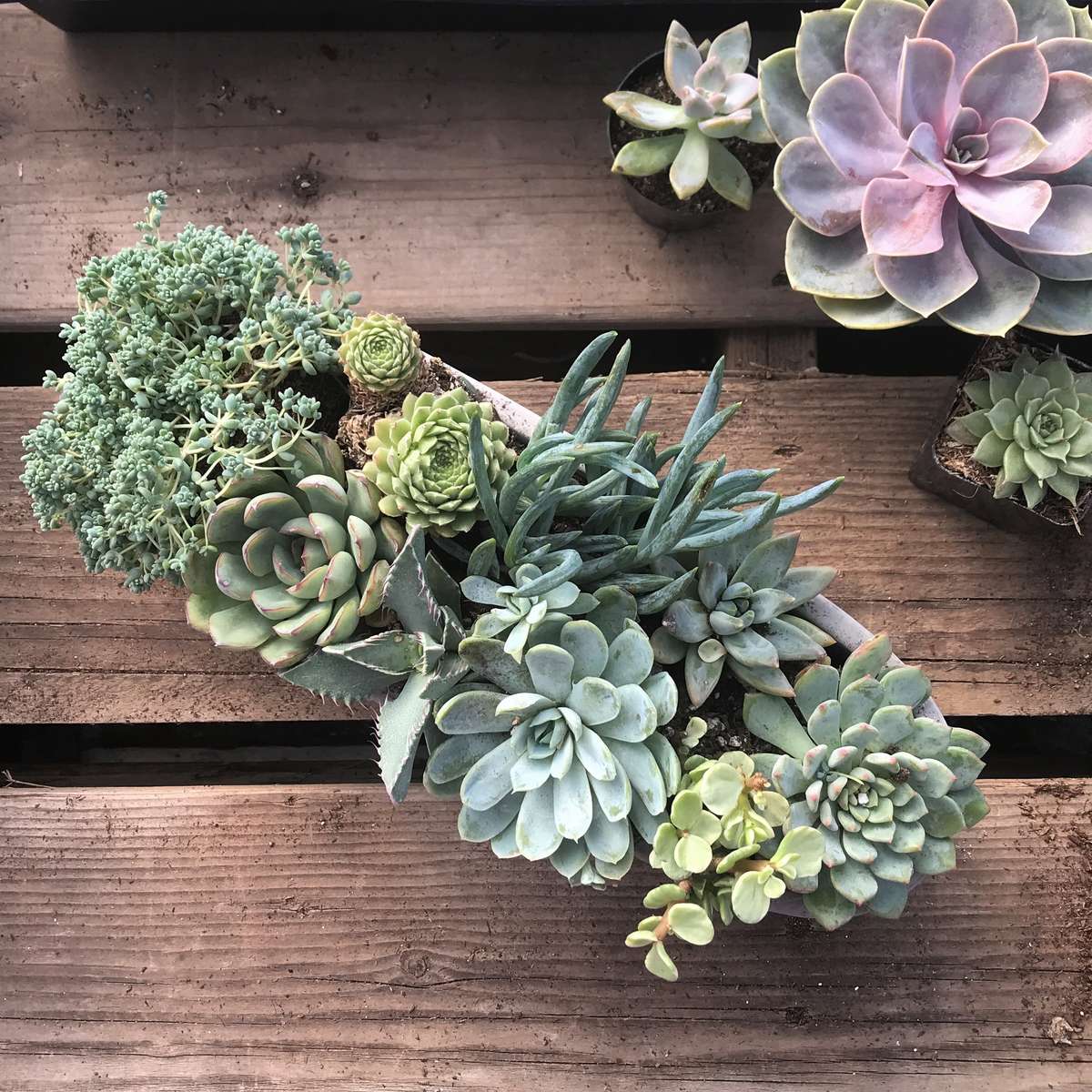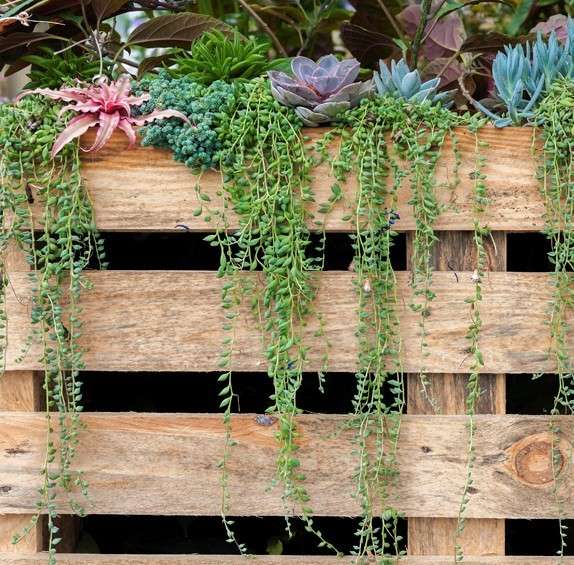
Summer Series V, The Art of Succulents

The Many Sides of Succulents
Succulent projects are popular for good reason—they come in so many varieties, they don’t require a lot of care, and they are versatile enough to play with the most creative gardener. Here are a few planting ideas and tips to care for your new creation.

Monochromatic
For a subtle look that’s easy on the eyes, create a piece that is monochromatic by blending tones of the color you want. Comparable colors are great for filling in small or empty spaces and can be designed to complement the overall theme of your garden. Green tones are soothing and tie into just about any garden palette.

Contrasting Color
Use color to reflect your mood. If you’d like your piece to be daring and demand attention, then consider contrasting colors. Incorporate hues of red, green and orange to reflect energy. Create a focal point to make a statement about your individual style and taste.

Classical Composition
Compose accent pieces with succulents in containers, hanging baskets, wall frames, terrariums, wreaths, and more. Succulents are excellent choices for creating "living wall" tapestries. Using layers of chicken wire and sphagnum moss, you can grow your succulents up any vertical surface. Our nurseries offer a large assortment of groundcover and pendulous varieties that will bring both color and texture to your creation.

Avant-Garden
Abandon tradition and upcycle an old fountain, wheelbarrow, wagon, wood pallet or birdbath. Succulents are excellent choices for dish gardens because they are shallow rooted and can be easy to care for if grown in the right spot. Be creative and have fun with it—the possibilities are unlimited.
Planting & Care Tips
Succulent vs. Cactus
Did you know? Not all succulents are cactus, but all cactus are succulents.
Succulents store water in their fleshy leaves, roots, and stems.
Cactus are a group of succulents that have a characteristic most succulents don't: areoles. Areoles are small, white, exterior bumps that bear spines or hairs. These help to ward off animals who are looking for a drink of water from within the cactus.
And whether we're calling it a succulent or a cactus, it's no surprise that they are popular! There are over 10,000 species throughout the world, offering a whole spectrum of color, size, leaf shape, and flower type. Succulents are also very easy to propagate, so if you find one you like, you can share with a friend.
Succulents store water in their fleshy leaves, roots, and stems.
Cactus are a group of succulents that have a characteristic most succulents don't: areoles. Areoles are small, white, exterior bumps that bear spines or hairs. These help to ward off animals who are looking for a drink of water from within the cactus.
And whether we're calling it a succulent or a cactus, it's no surprise that they are popular! There are over 10,000 species throughout the world, offering a whole spectrum of color, size, leaf shape, and flower type. Succulents are also very easy to propagate, so if you find one you like, you can share with a friend.
Light & Soil
Most outdoor succulents need some light shade in the hot afternoon. We all handle the sun pretty well when it's really hot, but let's face it... we're happier with a little shady reprieve.
Potted indoor succulents and terrariums need to be near a window that will get indirect sunlight.
Succulents require well-draining soil. We recommend E.B. Stone™ Organics Cactus & Succulent Planting Mix because it is blended with lava rock, sand, fir bark, and Canadian sphagnum peat moss that regulates moisture and conditions soil.
Succulents are not tolerant of clay soils which will cause them to turn yellow and succumb to rot.
Mulching around succulents with gritty materials, instead of bark-based materials, will prevent succulents from dying during wet winters.
Potted indoor succulents and terrariums need to be near a window that will get indirect sunlight.
Succulents require well-draining soil. We recommend E.B. Stone™ Organics Cactus & Succulent Planting Mix because it is blended with lava rock, sand, fir bark, and Canadian sphagnum peat moss that regulates moisture and conditions soil.
Succulents are not tolerant of clay soils which will cause them to turn yellow and succumb to rot.
Mulching around succulents with gritty materials, instead of bark-based materials, will prevent succulents from dying during wet winters.
Water For Your Color
Succulents take water up from the roots and store it in their leaves for future use. That's how they survive infrequent watering.
- Provide a drainage hole if you are using a pot.
- Concentrate on watering the soil vs. wetting the leaves to promote root growth.
- Watch for very slight wrinkles in the leaves. That's a sign that the plant is drawing its reserves and could use another good soak. Let the soil dry again before watering.
- You'll know you've watered too much if the leaves overfill and burst, leaving them to soften and rot.
- Watering a terrarium? Leave it open, and keep an eye on the soil—when it looks dusty and dry, it's time to water. Only water enough to saturate the soil without leaving plants to soak.
- Watering in your landscape? Use drip irrigation rather than overhead watering. This allows the water to get to the root of the plant and reduces fertilizer and nutrient loss.
Protecting succulents from frost: Some succulent varieties are cold hardy, but be sure to protect your tender succulents by using frost cloth if temperatures get below freezing.
